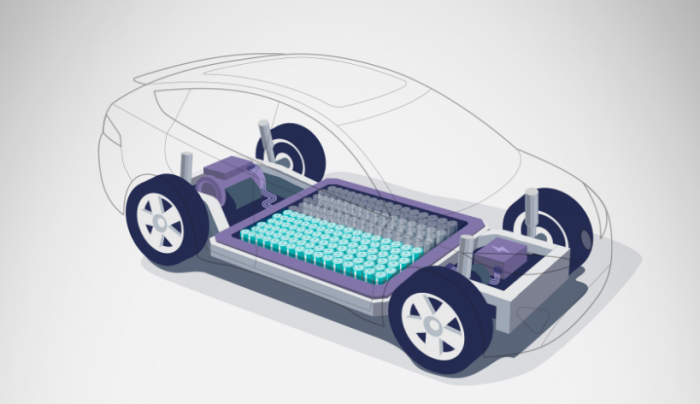Batteries
LG Energy to spend $3.1 bn on 4680 battery plant in S.Korea
The world’s No. 2 EV battery maker aims to use the Ochang factory as a core global R&D center that controls plants worldwide
By Dec 19, 2022 (Gmt+09:00)
1
Min read
Most Read
LG Chem to sell water filter business to Glenwood PE for $692 million


KT&G eyes overseas M&A after rejecting activist fund's offer


Kyobo Life poised to buy Japan’s SBI Group-owned savings bank


StockX in merger talks with Naver’s online reseller Kream


Meritz backs half of ex-manager’s $210 mn hedge fund



LG Energy Solution Ltd., the world’s No. 2 electric vehicle (EV) battery maker, is poised to spend $3.1 billion on facilities in South Korea to produce a next-generation cylindrical battery with a 4680 cell form factor, likely for the leading global EV maker Tesla Inc.
LG Energy on Monday agreed to invest, with local governments, 4 trillion won ($3.1 billion) through 2026 and hire 1,800 new employees at its Ochang factory 130 kilometers south of Seoul. The company currently manufactures 18 gigawatt hours (GWh) of cylindrical and pouch batteries per year at the complex.
The company, also Korea’s No. 1 battery maker, plans to use most of the funding to build and expand production lines for cylindrical batteries including those for the so-called 4680 battery, which measures 46 millimeters in diameter and 80 mm in length.
GLOBAL CONTROL TOWER
The 4680 type is seen as a game-changer in the battery sector as it is said to increase energy density fivefold and output sixfold compared with the conventional 2170 type, and boost EVs' mileage by about 16%. Tesla CEO Elon Musk said in 2020 that the 4680 battery will determine future competitiveness.
LG Energy plans to use the Ochang complex as a control tower that manages the companies’ production facilities around the world.
The company aims to set up an ideal smart factory system at home, using on its own technologies and staff, to control overseas plants through digital control technologies.
“The plan reflects the company’s determination to grow the local production base as a global core research and development center,” said a company official.
Write to Han-Shin Park at phs@hankyung.com
Jongwoo Cheon edited this article.
More to Read
-

-
 Korean chipmakersSamsung in talks to supply customized HBM4 to Nvidia, Broadcom, Google
Korean chipmakersSamsung in talks to supply customized HBM4 to Nvidia, Broadcom, Google19 HOURS AGO
-
 EnergyLS Cable breaks ground on $681 mn underwater cable plant in Chesapeake
EnergyLS Cable breaks ground on $681 mn underwater cable plant in ChesapeakeApr 29, 2025 (Gmt+09:00)
-
 Business & PoliticsUS tariffs add risk premium to dollar assets: Maurice Obstfeld
Business & PoliticsUS tariffs add risk premium to dollar assets: Maurice ObstfeldApr 29, 2025 (Gmt+09:00)
-

Comment 0
LOG IN


